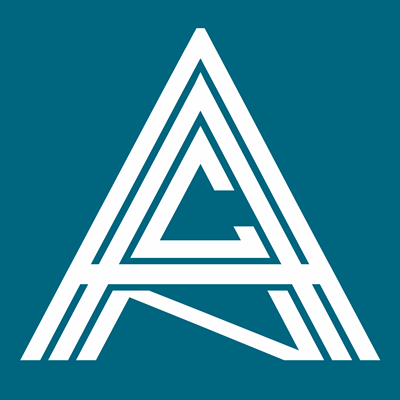
Once upon a time I met a new friend.
I wasn’t looking for him when suddenly he showed up in an MRI; he was found in February, 2020, just a couple of weeks before the pandemic started.
That was when I got a call from my neurologist letting me know about three different issues they discovered in the MRI: “a tumour in my ear (probably benign)”, a massive sinus infection, and a rotting tooth which had caused a hole in my jawbone. (This last issue was probably due to a poorly-performed root canal about eight years before.)
I considered myself lucky that there was nothing more serious. At that point I was unaware how my newfound friend would complicate my life!
The neurologist referred me to a neurosurgeon in my home town of Hamilton. Five months later I got a phone call from the neurosurgeon, who finally put a name to my new friend: acoustic neuroma (AN).
Given that the size of the tumour was 1.9 cm, he recommended a “watchful waiting” approach. He gave me very little other information about my friend.
Meanwhile, I decided to go ahead and have the other two issues dealt with: I had sinus surgery in September, 2020 (since then I have been free of the chronic sinusitis, which had plagued me for years), and I had my root canal revision completed by 2021. That left me only to figure out what to do about the acoustic neuroma.
I should mention that I was 49 when the tumour was discovered. If it had caused any symptoms up until then, they were mild and would never have led me to suspect anything serious. The initial MRI was ordered because of a completely unrelated episode. Over the course of the following two years, my symptoms remained mild, but included slight hearing loss, sometimes a little bit of dizziness (like floating), and hyperacusis (hearing distortion), which started in February, 2021. To date, it’s the hyperacusis which bothers me the most, but so far it hasn’t limited my activities. I do, however, take musicians’ ear plugs with me whenever I go to the theatre or a concert.
During 2020–2021, I had two visits with an otolaryngologist in Hamilton. He performed a substantial number of tests to assess my hearing, nerve function, vision, and balance. He explained to me that acoustic neuromas can greatly impact the sense of balance, and encouraged me to do some exercises to try to compensate. Since then, all during the lockdown periods, I have forced myself to go on long walks every day, moving my head around as if I were “window shopping”. Whenever the gyms were open, I continued to play squash and ping pong with my husband, seemingly very good workouts for this issue.
In February 2021 I had my second MRI (about a year after the first); the tumour had grown to 2.2 cm. I waited for a month for my neurosurgeon in Hamilton to reach out and interpret the results for me. I finally called his office.
Unfortunately, I felt anything but positive about this doctor’s approach: he was abrupt on the phone, scolded my husband for interrupting with a question, offered few details about the different kinds of treatments possible, and said very little about the possible consequences of surgery (hearing loss, facial paralysis...). He didn’t mention the possibility of gamma knife at all. At one point, he asked me about my hearing in the affected ear and I said that it was “not very good.” Based partly on this comment, it seemed, he recommended translabyrinthine surgery. (He did not call it such, but said that it would “sacrifice my hearing.”)
I was in total shock after this conversation. But I was sure of two things: he wouldn’t be my neurosurgeon and I wanted to find a treatment as soon as possible.
Starting that day (in March, 2021), my husband and I started seriously researching acoustic neuroma treatments. We worked as a team—he did the Canadian research and I did research about Spanish options (I’m from Barcelona and my family still lives there).
Spain has an excellent healthcare system, just like we have in Canada. Unlike Canada, however, theirs is a mixed public-private system. Not having lived in Spain for almost a decade, I no longer have public medical coverage, but I was able to arrange for virtual appointments with three different neurosurgeons from different hospitals in Barcelona. It was money well spent; for the first time, someone explained to me very clearly the nature of acoustic neuroma, the treatment options, and the process.
They were able to log into my online health records and illustrate what they were talking about with my Canadian MRIs (comparing my right and left auditory nerves, for example, so that I could more clearly understand the size and position of the tumour). (Interestingly, all three Spanish neurosurgeons seemed to be perplexed as to why the MRIs had been done “without contrast”.) I had also provided them with access to my audiological assessment.
Although I discussed gamma knife with them, all three of these surgeons recommended that I undergo retrosigmoid (suboccipital) surgery, partly in order to try and preserve my useful hearing. When we asked about wait times, the answer was basically “as soon as you’re ready.” I was very close to packing my suitcase and getting the surgery done there.
As I said, my husband was doing his research in parallel, and came across the website of the Acoustic Neuroma Association of Canada.
And, oh my goodness, what immediate relief! I took out a membership right away and the next day I got a call from the Executive Director, Carole Humphries. Everything started to become less stressful and more hopeful. For the first time in the process, I felt that I had someone informed, objective and trustworthy to whom I could turn.
Carole passed along the contact information of others with an acoustic neuroma with whom I could get in touch. Some of them had already had surgery or gamma knife. I emailed three people from the list, and I got responses from all of them. It was very reassuring to hear about their experiences.
Carole also provided me with the names of neurosurgeons at Toronto centres of excellence in acoustic neuromas. I asked my family doctor (in April, 2021) for a referral. Surprisingly, my family doctor not only tried to convince me to stay with the Hamilton neurosurgeon, she also refused to make two referrals, saying in part that too many opinions would just confuse me. She said I would have to choose one of the two, and I picked Dr. Zadeh from Toronto Western Hospital. From there everything proceeded quickly, and I was grateful for that.
After less than three weeks I received a call from Dr. Zadeh (mid-May). She was the first doctor who asked me personal, lifestyle questions such as if I had children and what my job was. I really appreciated this because it was obvious that she was trying to evaluate the impact which unintended surgical outcomes (loss of hearing, facial paralysis etc.) could have on my life.
We talked about retrosigmoid surgery, possible post-surgery complications and how difficult it was to perform. (One of her most interesting statements was that, at least in my case, on a scale of complexity from 1 to 10, retrosigmoid surgery rates about 9.5!) It was also interesting to learn that my being relatively young could make the surgery more complicated: because my cerebellum would not have shrunk too much yet, it would be more susceptible to damage when they had to move it aside to access the site of the tumour.
Finally, she advised me that she thought gamma knife radiosurgery would be a good option for me if, after further evaluated by her team, I was found to be a suitable candidate. She left it up to me to decide what to do. I told her that I would like some time to think about the two options. She told me that she could perform either conventional surgery or gamma knife in September 2021 (just 4 months later).
The following Monday I called Dr. Zadeh’s office to let them know that my decision was to go with gamma knife.
Why Gamma Knife?
-
I was told that in 85% of patients it stops the tumour from growing any further.
-
I can live a normal life with the tumour, even if I need follow-up MRIs for the rest of my life.
-
It’s much less invasive than conventional surgery, and there is a better chance that the adjacent brain and nerves can be preserved.
-
I certainly hope I am among the 85% whose tumours stop growing, but even if it doesn’t work it’s not the end of the world because there are still other options.
-
On the downside, I was informed just prior to gamma knife that many patients will still experience total hearing loss on the affected side; some of them very quickly after the treatment and others gradually, over a period of years.
Everything was quick and easy after that. I received Instructions from Dr. Zadeh’s office. Finally, the big day arrived, and I had gamma knife on July 28th, 2021.
I was extremely nervous the day of the radiosurgery, even though I knew how it would unfold. (In one of the calls, a doctor explained it very clearly and they even sent of video of what to expect.)
I arrived at Toronto Western Hospital early in the morning. Due to COVID-19, my husband wasn’t allowed to come in with me. A nurse took care of me the whole time.
Before undergoing the radiation treatment, four members of the gamma knife team attached the frame to my skull, using only a local anesthetic. I have to say that I was terrified and shaking, but the team made me feel safe and comfortable.
I had to wait for another scan, performed with the frame attached, and then was finally taken to the gamma knife machine. It feels very similar to getting an MRI, but better because it doesn’t make any noise. I was in the machine for 50 minutes; I was able to relax, practise my breathing, and try to think good thoughts. I felt a great sense of freedom when I emerged.

